1. Fix USB Root Hub to make USB recognizable
1. Open
Device Manger > Find and expand
Universal Serial Bus controllers;
2. Find and right-click on
USB Root Hub > Select
Properties;
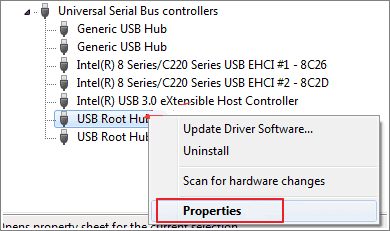
3. Click
Power Management > Uncheck
All the computer to turn off the device to save power > Click
OK;
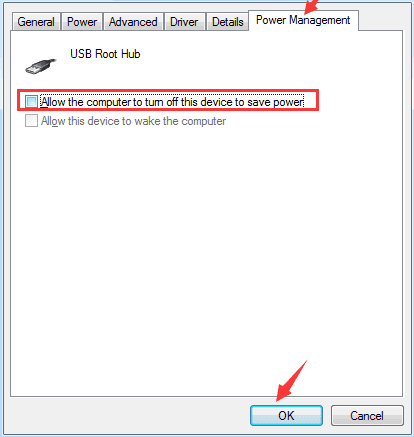
4. Repeat the operation if you have more USB Root Hub and click
OK to finish the process.
5. Reboot PC and reconnect USB device with PC to see whether Windows 10 can read your USB drive or not;
If not, check All the computer to turn off this device to save power back on.
2. Update & reinstall USB drivers and fix bad sectors on USB
When USB drivers are outdated or bad sectors exist on USB drive, USB
drive may not be able to function normally. To update, reinstall USB
drivers and fix bad sectors on USB drive may help!
Update and reinstall USB drivers:
1. Open
Device Manager > Expand
Universal Serial USB controllers;
2. Find and right-click on the right USB Hub of your USB drive and select
Update Driver Software;
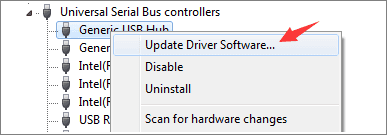
3. Select Search automatically for updated driver software and Windows will help you to update the latest drivers automatically.
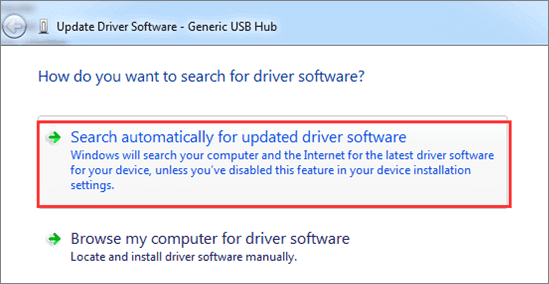
4. Reboot PC to see if USB can be read or not;
If not, right-click USB Hub of your USB drive and select
Uninstall;
5.
Restart computer once again and there your USB device driver will be reinstalled to make USB drive recognizable again.
Fix bad sectors on USB drive:
To fix bad sectors on USB drive, we'd like to recommend you try
EaseUS Partition Master Free which supports to repair bad sectors on USB drive in 3 simple steps:
Step 1: Open EaseUS Partition Master on your
computer. Then locate the disk, right-click the partition you want to
check, and choose "Check File System".
Step 2: In the Check File System window, keep the "Try to fix errors if found" option selected and click "Start".
Step 3: The software will begin checking your partition file system on your disk. When it has completed, click "Finish".
3. Change power supply to make USB drive work in Windows 10
1. Open
Control Panel >
Hardware and Sound >
Power Options;
2. Click
Choose what the power button does >
Change the settings that are currently unavailable;
3. Uncheck
Turn on fast startup >
Save changes;
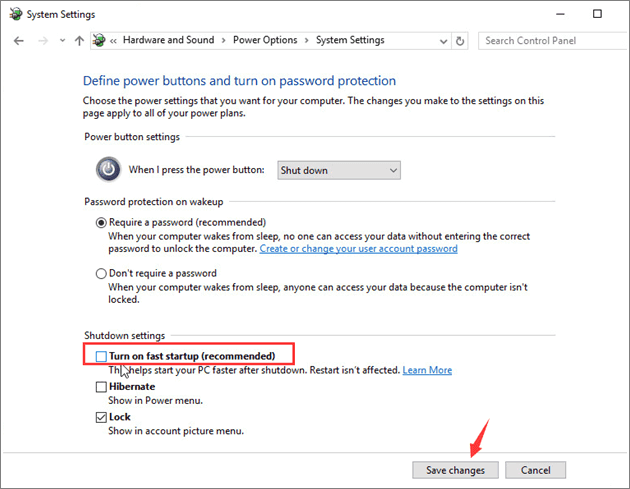
4.
Restart PC and plug in USB device to see if it works or not;
If it still not works, try to change the USB Selective Suspend Settings:
1. Go to
Control Panel >
Power Options >
Change plan settings;
2.Click
Change advanced power settings > Find and expand
USB settings >
Expand USB selective suspend settings;
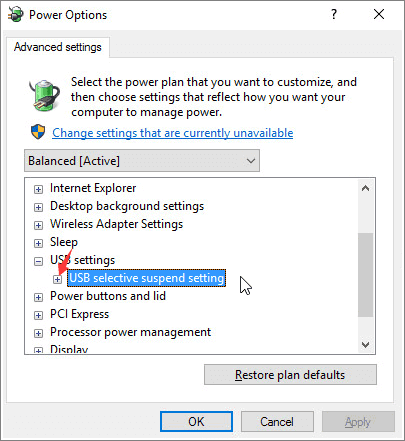
3. Disable both
On battery and
Plugged in settings >
Apply >
OK.




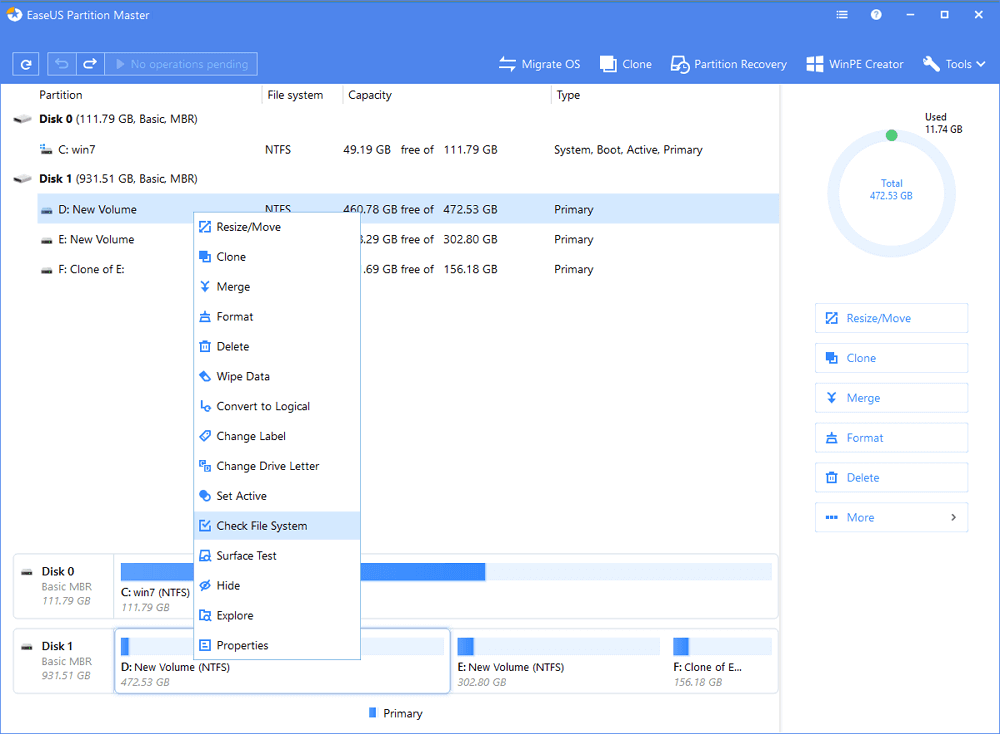
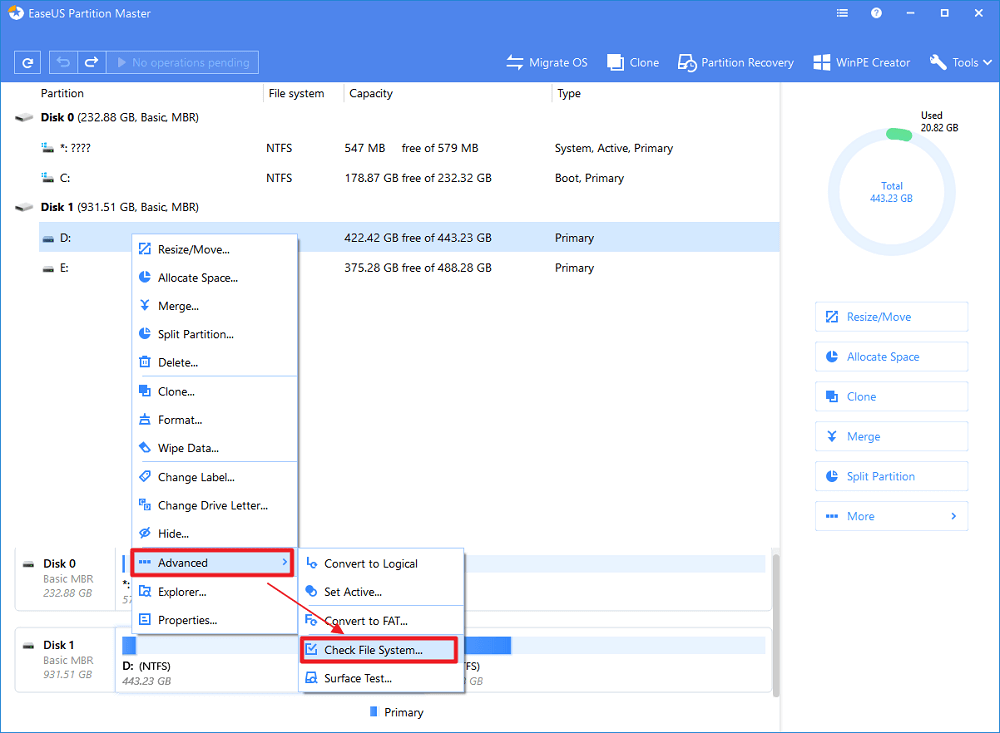
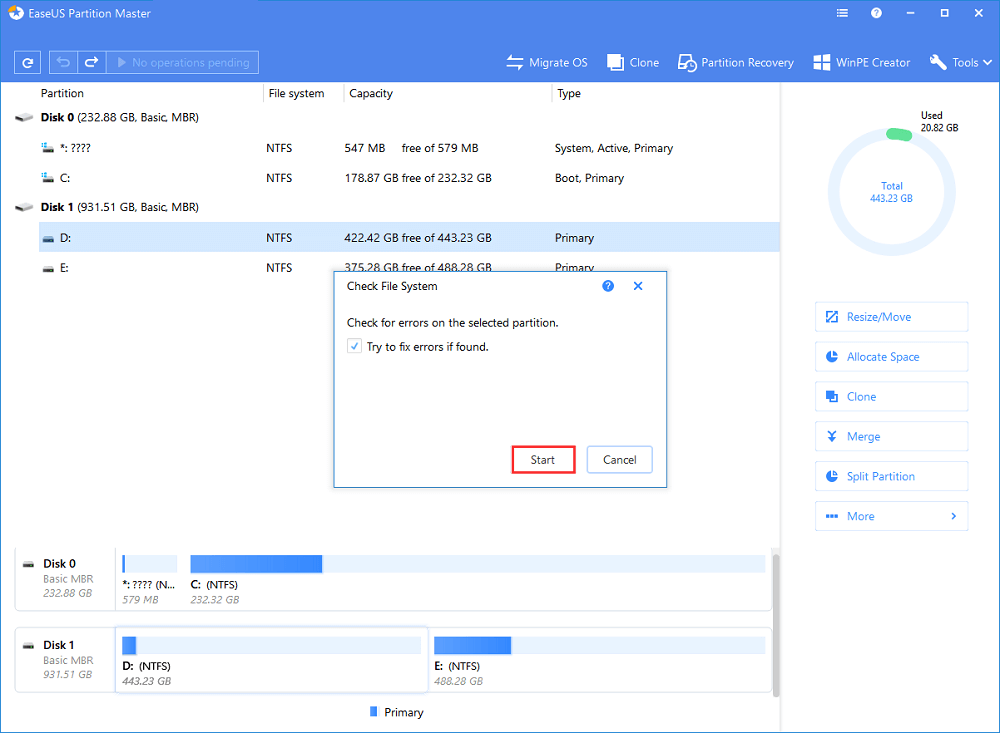


Comments
Post a Comment